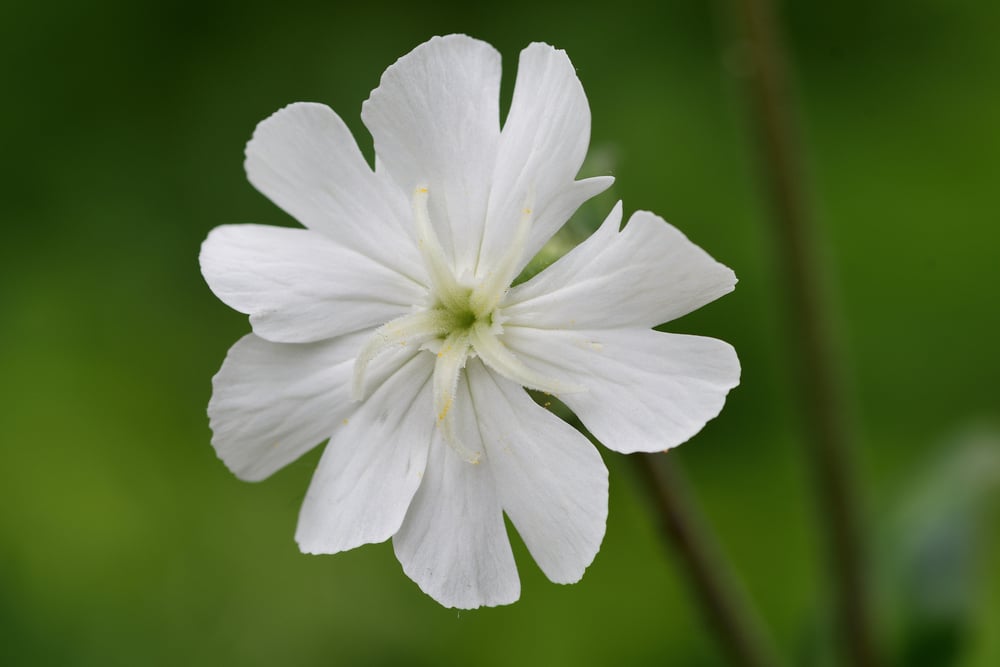Last Updated on
Have you ever wanted to know more information about plants? In this article, we’re focusing on identifying a white campion. We’ll also discuss where they’re found (including the seasons) and their uses.
Overview
- Scientific Name: Silene latifolia
- Common Name/s: white campion, bladder campion
- Family: Caryophyllaceae
- Origin: native
- Habitat: roadside verges, waste grounds, grassy areas
- Flowering Season: May to September
Where White Campion Is Found

The white campion (Silene latifolia) is typically found in England’s southern and eastern parts since the plant loves the sun. It’s also annually and biennially present on roadside verges, waste grounds, and grassy areas. The white campion is essentially a weed mainly found in soils with a pH of 6.1–8.2.
Seasons to Find Silene Latifolia
Silene latifolia flowers throughout the summer, but you’ll experience its full scent at night—which attracts feeding moths to the plant. Furthermore, there are some southern Europe areas where the flowers can appear much earlier—such as in February or March. Then, by June, the flowers inside of the plant are dead.
How to Identify a White Campion
A white campion has white flowers with five petals, each divided into two. Its stems and leaves are hairy, and there are even some places in the world where its colour is red. A red campion can cross-breed with a white campion to form a light pink shade. They can grow to heights of up to 1m.
What Is White Campion Used For?
The roots of Silene latifolia have been used as a soap substitute for hair shampoo, washing powder, and more.
Furthermore, there have also been some incidents of using the campion flower for treating snake bites, and it’s been common to use the flowers to cure corn and warts on the body.
Is the Flower Edible?
Yes. The flower’s leaves work as a cooked green. Simply boil them for around 10 minutes and add them to your dish.
Alternatively, you can eat the leaves uncooked, although they might leave a bitter taste in your mouth due to a small amount of the toxin saponin.

How to Grow Campion Flowers
Growing these flowers is fairly easy. Simply sow the seed(s) in early autumn, when you want the seed(s) to grow. Lightly cover with soil. The white campion self-seeds easily, so it requires minimal care and maintenance.
Is the White Campion Invasive?
The white campion is native to Europe and made its way to North America in the early 1800s. The white campion can create viruses that affect spinach and beet plants, and it’s also seen as an annoying weed by some.
How to Control the White Campion
As the Silene latifolia is highly invasive, it may need controlling to see it from planting underground. A single champion can produce up to 15,000 seeds. Controlling the flower is very similar to stopping weeds from growing. The most important and common method is to remove the root system to prevent the flower from trying to seed.
Pull out the roots before you see the flowers begin to blossom. You’ll need to remove the entire roots to prevent them from growing back. Ordinarily, tilling can be used to reduce it from populating on lawns or in farms, but you’ll need to keep on top of this process for the best results.
Do you have any insight or useful information into this flower that may entice other readers? Share your facts in the comments.
Amy is a U.K.-based writer and editor with a penchant for helping consumers find the best home products for their needs, as well as providing easily digestible guides for living better at home. Her dedication to her work means she can usually be found elbow-deep in research or hunting down samples of the latest and greatest on behalf of her readers.
An avid DIYer herself, Amy’s passion lies in teaching others how they too can achieve their dream homes by tackling some of those pesky projects themselves! Whether it’s building furniture from scratch or turning an old dresser into a coffee table, Amy is always happy to share what she knows about making your house feel like home without spending a fortune.



